-
Car Reviews
- All reviews
- Midsize SUVs
- Small cars
- Utes
- Small SUVs
- Large SUVs
- Large cars
- Sports SUVs
- Sports cars
- Vans
Latest reviews
- Car News
-
Car Comparisons
Latest comparisons
- Chasing Deals
The grandfather’s axe of the 4×4 dual-cab ute world, does the Hilux still deserve such a hefty price tag in this evolving ute market?
This N80 Toyota Hilux has been on sale in Australia, albeit with facelifts and updates, since 2015. That’s right, for 10 years we’ve received essentially the same chassis, suspension, and driveline.
It would be remiss not to mention the inclusions that have come along the way, though. The most useful being the introduction of the Multi Terrain Select off-road traction control system which provides terrain modes such as Sand, Mud and Rock modes.
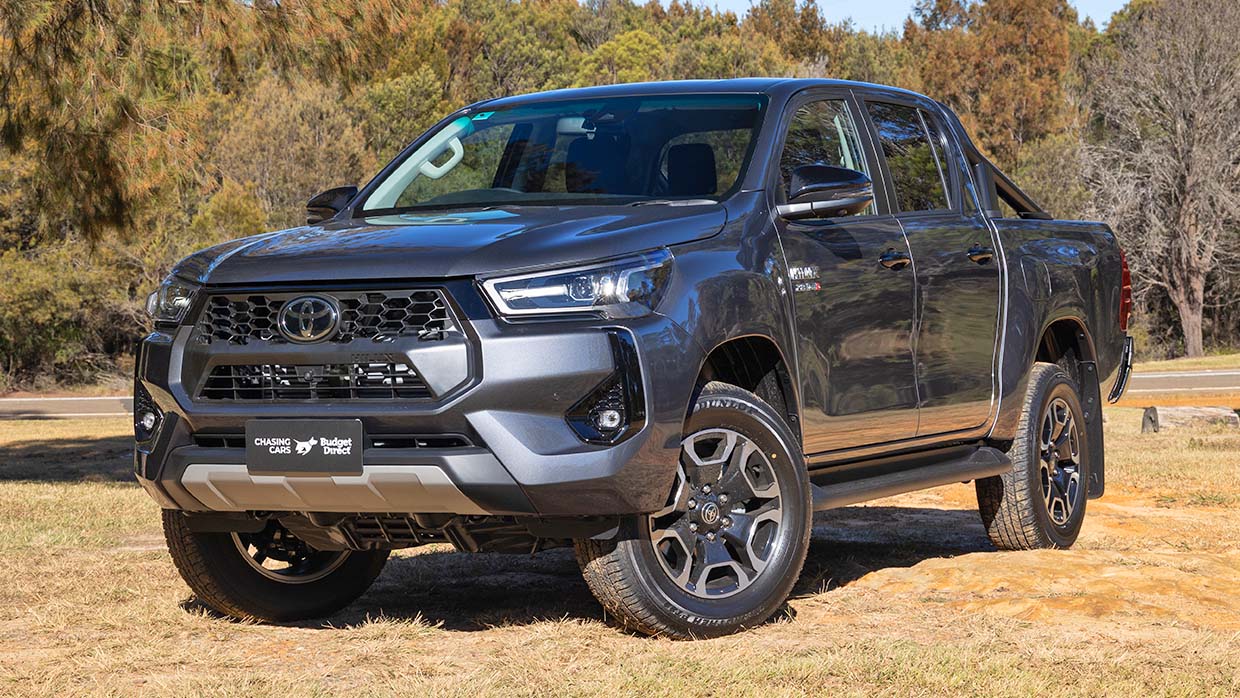
The other key addition is Toyota’s attempt at reducing fuel consumption, called V-Active Technology. This system is made up of a 48V motor generator and DC/DC converter — it’s a (very) mild hybrid system essentially, which reduces on-paper fuel consumption by 10 percent, and adds a little power when moving off the line.
This is also a key component of the stop-start function found in the SR5 Hilux… which was disabled every time the start button was pushed.
So, really, the main thing that has changed dramatically is the price. Back in 2016 you could pick up an SR5 Hilux for approximately $55,000. These days, you’re looking at $63,260 before on-road costs, or just under $70K on the driveway — a genuinely bitter pill to swallow.
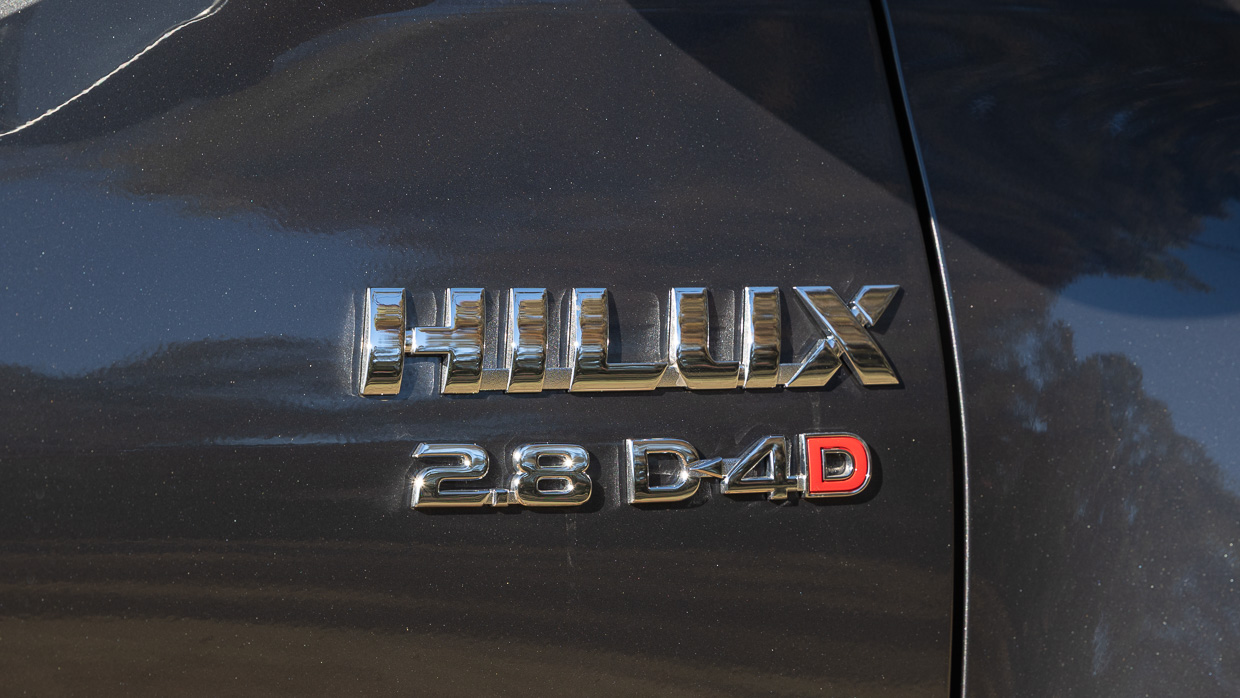
Considering the Hilux is (just) Toyota’s number one seller in Australia, there’s obviously a demand for this product. Not even a near $20,000 price hike seems to deter eager buyers, despite not gaining much additional equipment for your money.
So why do Aussie motorists keep coming back? That’s what we were keen to find out, especially after the last few months spent sampling uber modern dual-cab utes, like the BYD Shark 6 and GWM Cannon Alpha PHEV.
This will be short, as the Hilux, even in SR5 guis,e is one of those vehicles (like the 70 Series Land Cruiser) where you pay more for the privilege of receiving less.
The SR5 rolls off the production line wearing 18-inch alloy wheels, which is a little bigger than we personally recommend (17-in is the sweet spot). It’s nice to see fog lights included, an underrated component.
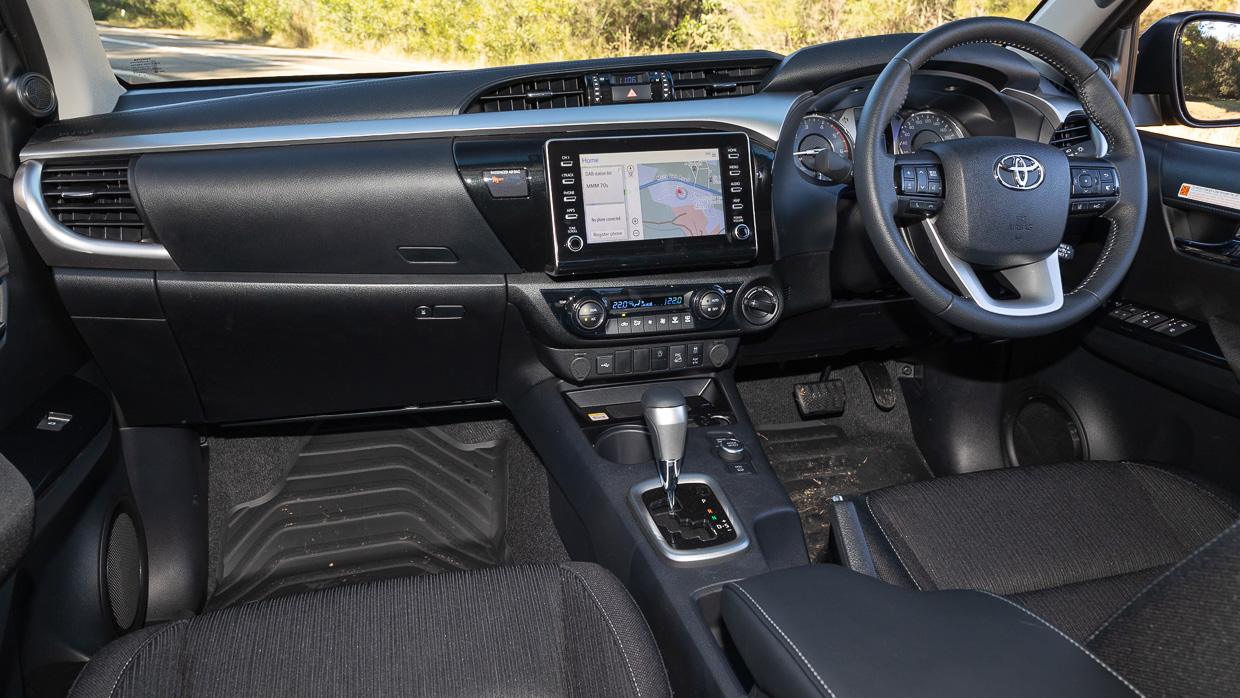
SR5 Hilux receives keyless entry and start functions, which work well.
Dual-zone climate control is also a feature, and as is traditionally the case for Toyotas, its icy breeze cools the cabin rapidly. Auto LED headlights are standard, as is the 8.0-inch infotainment screen, though that needs updating badly. More on that below.
One word comes to mind when thinking about the interior and tech levels in the 2025 SR5 Toyota Hilux: dated.
This particular SR5 skipped the Premium pack ($2500) and has cloth seats, which are preferable to leather, but it made me ask the question: why not just buy the lower spec, then?
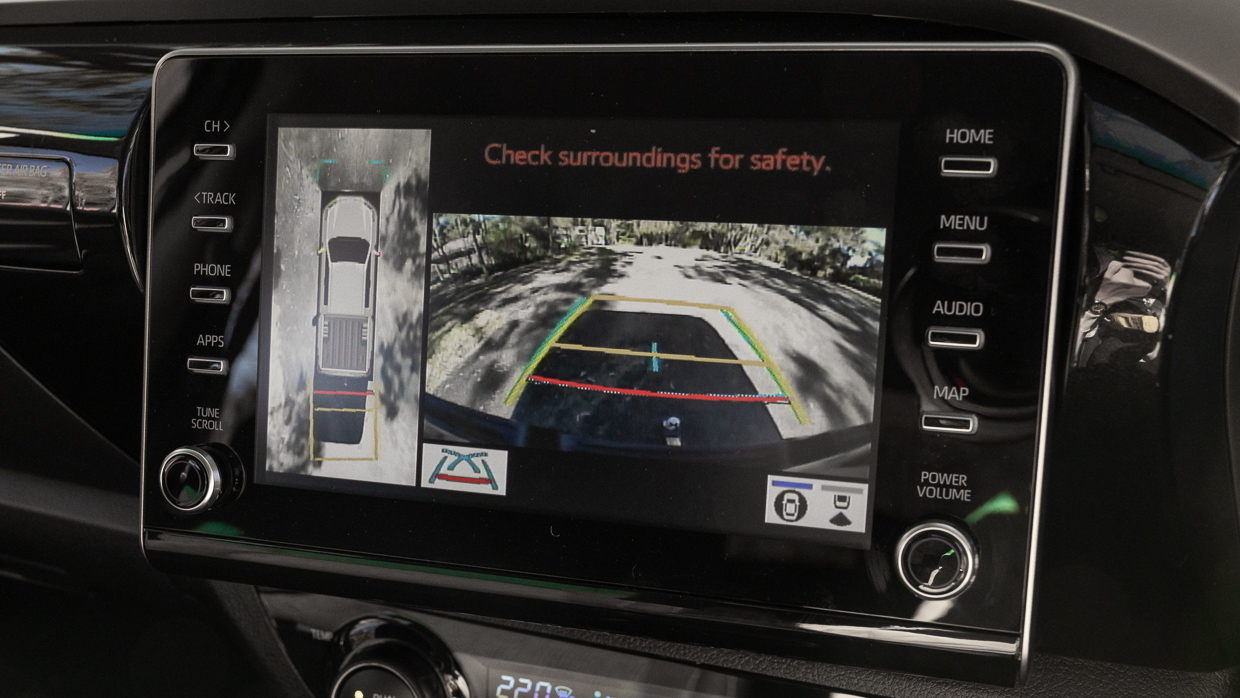
Tech-wise, the supplied infotainment screen is one of the worst found in any new vehicle. Slow, pixelated, and lacking key features like wireless Apple CarPlay/Android Auto.
The reverse camera looks like it’s in 8-bit, too — this is another Toyota issue the aftermarket will have an answer for. I will say though, at least Toyota has included a volume knob, which should be a mandatory feature on all vehicles.
What do I like about the Hilux SR5, then? The cupholders are useful, and in the same position as rivals like the Ford Ranger, and Isuzu D-Max.
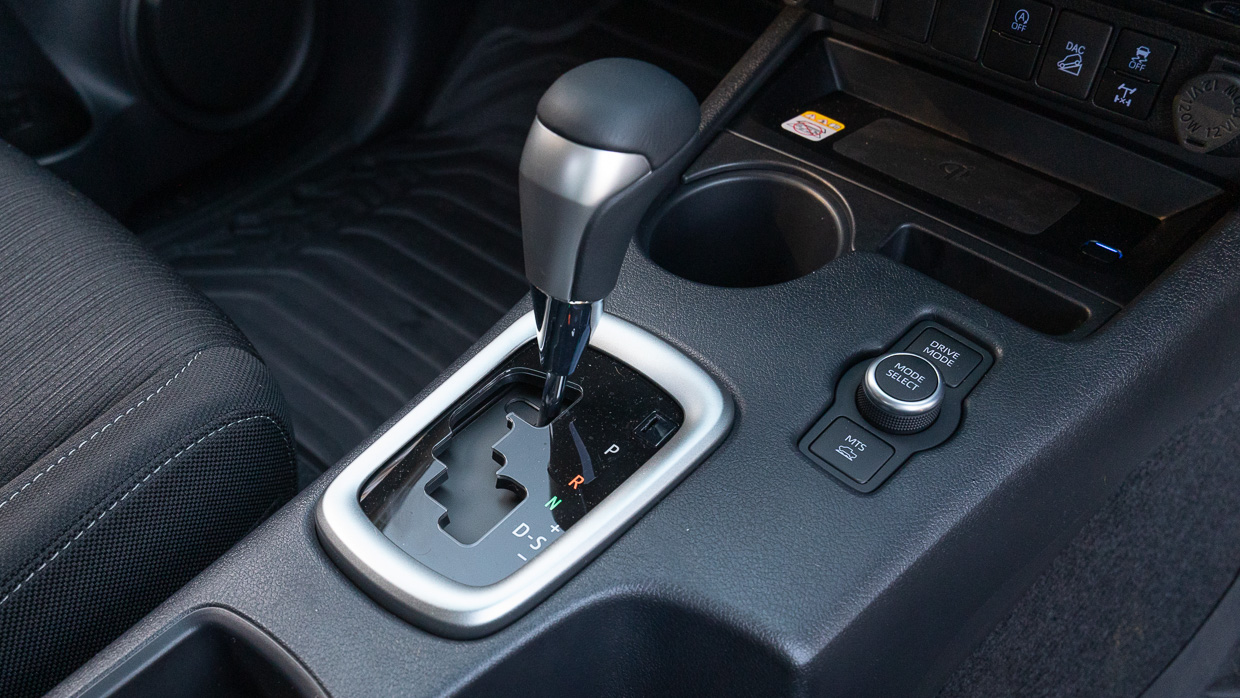
The stereo sounds pretty good too, despite the head unit’s limitations. Oh, and the handbrake works in this Hilux too, which is a novelty Toyota owners will understand.
The Hilux’s back seat is cramped, too, with a bench that isn’t very comfortable. Compared to a more passenger-oriented Ford Ranger, the Hilux would be compromised as a family car.
For all the complaints about the low-tech cabin, though, the Hilux’s inherent simplicity is part of its charm.
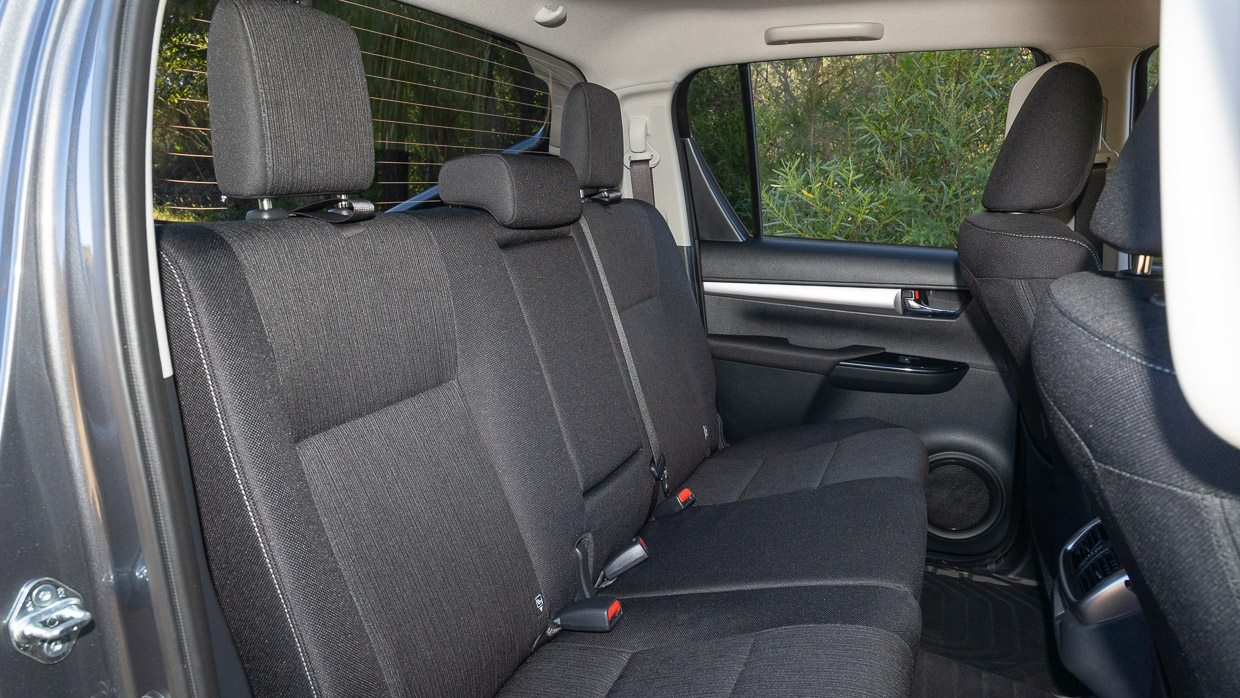
This interior will look the same, and operate as new, in years to come and everything just works. How can one be so sure? Well, my last Hilux had 300,000kms on the clock when I sold it.
The new owner commented how good the seats, steering wheel and controls all felt and operated still. I’d like to say this is thanks to a fastidious maintenance schedule, but that would be a lie.
There’s a reason why the mines still use the Hilux platform, they are hard to bust. And when you do manage to break something, parts are everywhere thanks to Toyota’s love of developing one part well, and using it as many applications as possible.
Considering this SR5 Hilux is supposed to be ‘top spec’ (not including GR Sport and Rogue editions) it’s baffling you don’t even get a tub liner in the tray. Or a tonneau cover. Just four tie down points, that’s it.
If you’re building a touring vehicle that will get decked out, you might like this blank canvas approach, to us it feels a bit… stingy.

Dimension wise, the 2025 Toyota Hilux SR5’s tub is 1570mm long, 1645mm wide and 481mm deep. If we look at the competition, say the Isuzu D-Max and Mazda BT-50, they measure in at 1571mm long, 1530mm wide and 490mm high.
So the Hilux has an advantage when it comes to tub width, which is helpful for tradies looking to put bulky pallets between the wheel tubs.
3500kg braked towing capacity is the industry standard for this size vehicle, which the Hilux delivers on.
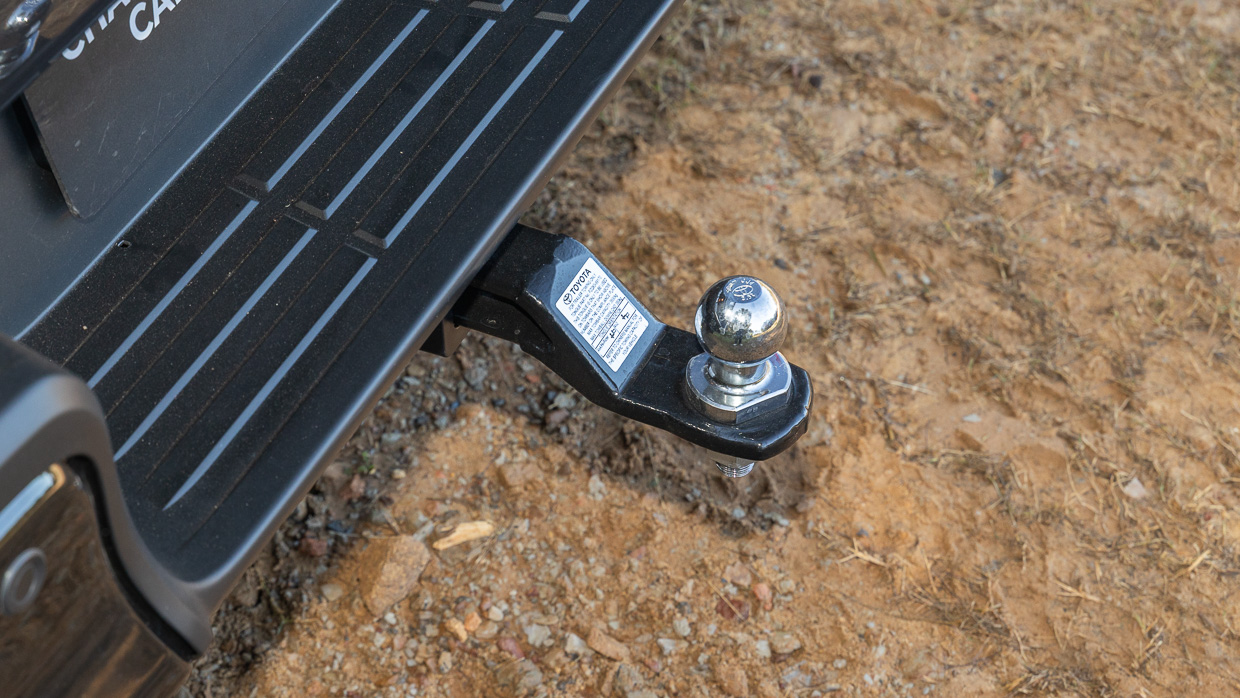
Other vital specs for the SR5 Hilux are a GVM of 3050kg, GCM of 5850kg and a decent payload capacity of 945kg. This is a vehicle that will be worked hard, so it’s nice to see realistic specs here from Toyota.
Vague steering is the first negative point worth mentioning with the 2025 Toyota Hilux. This could be a positive for those wanting to bolt on bigger tyres, though, as the additional weight would firm up steering feel in theory.
Braking performance is adequate for the vehicle and its intended purposes, it’s a very easy ute to drive. However, something every member of the Chasing Cars team reported on, was how bad the factory suspension ride quality is.

Yes, the ute was unladen, so you’d be right in saying it should be firm, but the factory suspension tune is torturous. The first thing you’ll want to do to this Hilux is update the factory struts, shocks and springs.
This flows on to the off-road ability of the 2025 Toyota Hilux SR5, which remains one of the most capable dual-cab utes on the market, though the much cheaper GWM Cannon XSR with standard front and rear differential locks would see it off.
But, when you combine the impressive suspension travel, good low reduction gearing and the best traction control system in the ute game, the Hilux continues to impress with how well it performs in technical terrain in stock guise.
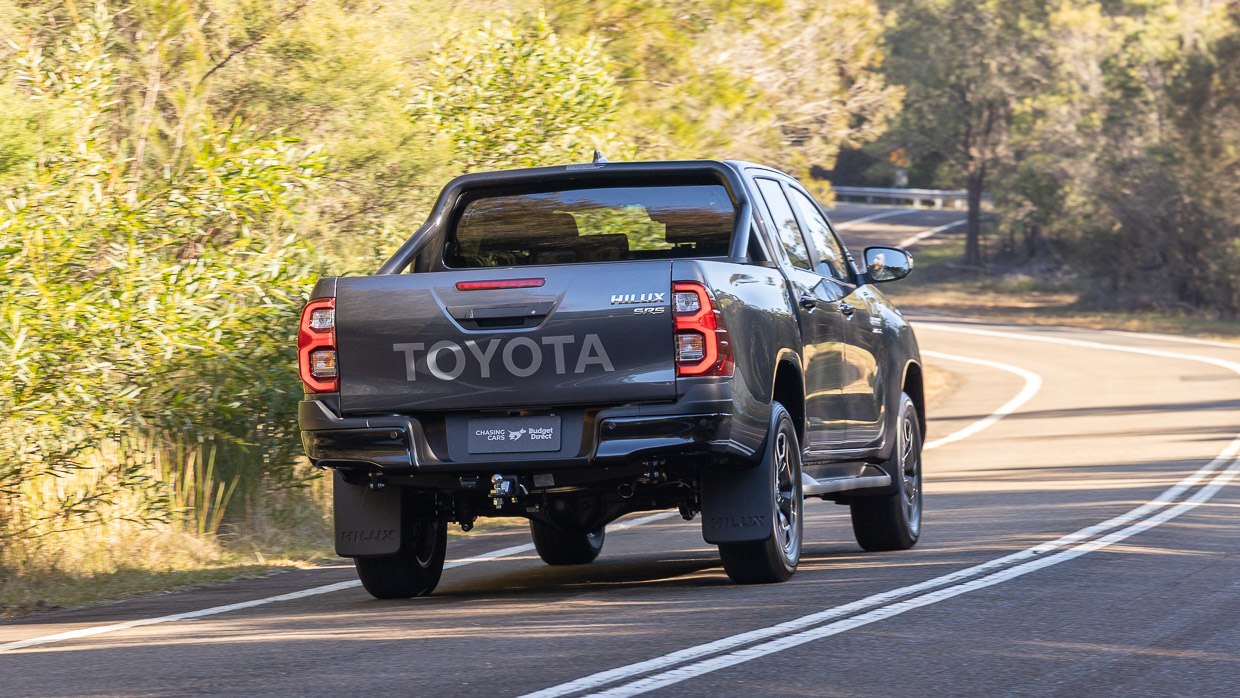
Upgrade the suspension, fit some more aggressive rubber, and this Hilux becomes a very useful and adaptable tool for work and play duties.
There are many reputable vendors in Australia, as the Hilux is perhaps the most well supported dual-cab ute on the market when it comes to fitting out with off-road goodies.
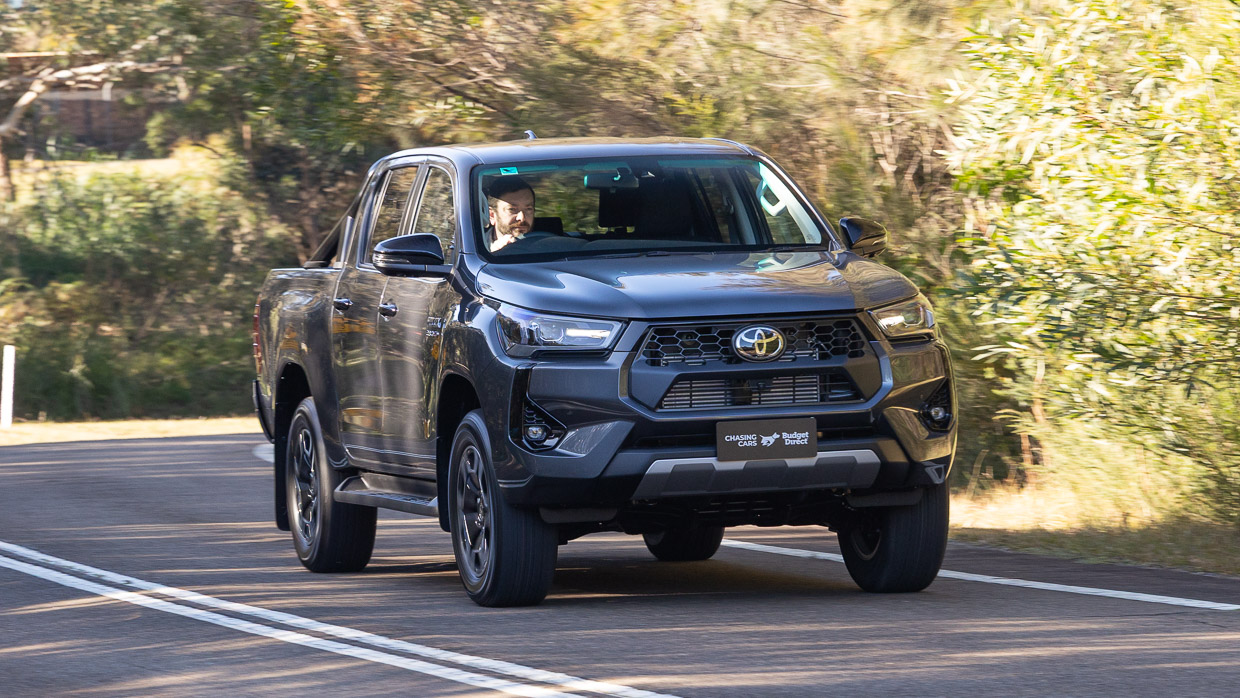
The 2.8-litre turbo-diesel four-cylinder delivers well when mated to the six-speed Aisin transmission that many other utes are running.
The engine could do with a little more grunt, as per the GR Sport tune producing 550Nm, but what ute couldn’t use an extra 50Nm…
Some of the Hilux’s factory default warnings are downright infuriating. Driving through a school zone at 7pm, the Hilux loudly declared “YOU ARE ENTERING A SCHOOL ZONE”. Then when leaving said school zone, it let me know I’d left.
Thankfully, you can turn this array of warning off in the navigation settings of the Casio calculator-inspired infotainment display. It’s not easy to find, but when you do get into the sub menu, it provides options for what you would personally like on or off — and it stays that way.

The 2025 Toyota Hilux was crash tested back in 2019 and scored an ANCAP rating of five stars, top marks. Which is important for both sides of the end user coin. Mine and fleet operators demand five-star safety, as do private owners.
ANCAP gave the Hilux an Adult Occupant Protection score of 96% and a Child Occupant Protection score of 87%. Vulnerable Road User Protection received a mark of 88% and Safety Assist came in at 78%.
With ANCAP’s six-year date stamp timeout fast approaching for the Hilux, it will soon be considered ‘unrated’.

The Hilux’s aging platform does have advantages, however. New vehicles have more and more safety technology but the Hilux seems to have missed this memo.
There’s no driver monitoring to remind you your shirt could be untucked, when the vehicle does intercept it’s rather polite and smooth about how it does it also.
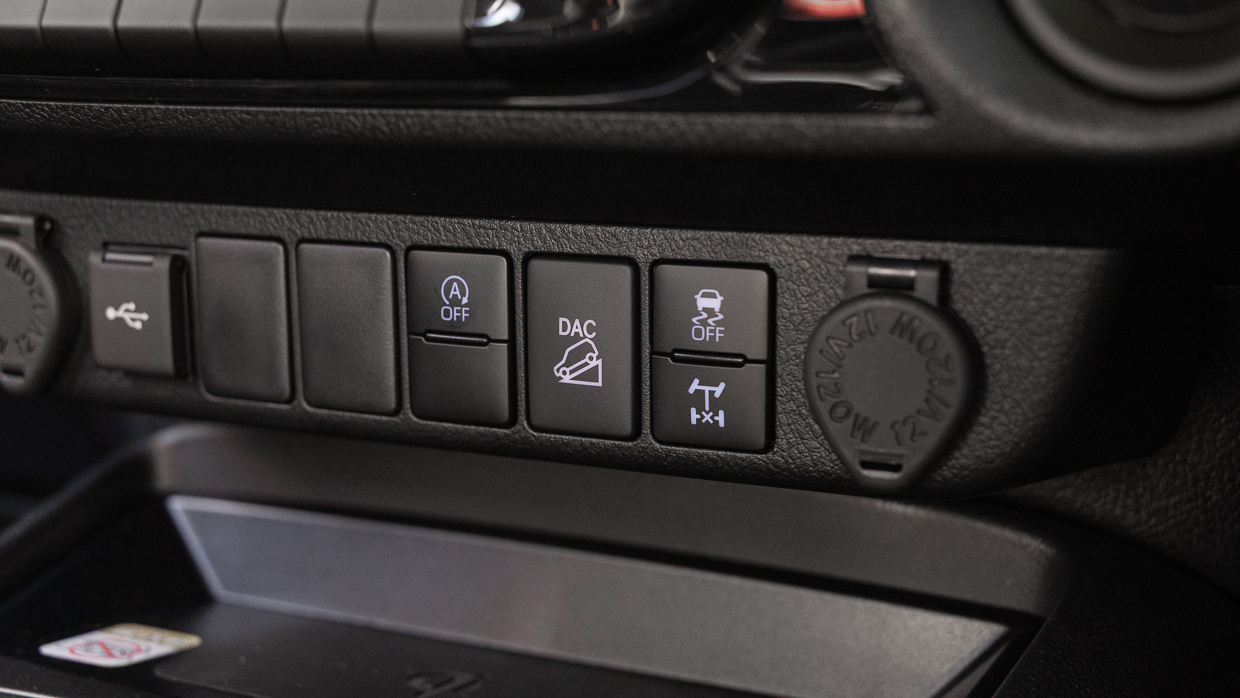
There’s no welcome song and dance, and I respect that about this vehicle. You are paying for simplicity, like many other Toyota 4x4s, and clearly this philosophy resonates with Aussie motorists.
The 2025 Hilux SR5 also receives:
During a mix of highway, off-road and urban driving, the Hilux’s average fuel consumption came back at 9.1L/100km. Toyota claims a combined cycle figure of 7.9L/100km, so it’s not too far off the mark.
Toyota backs the Hilux with a five-year unlimited kilometre warranty for private buyers; commercial owners are capped at five-years and 160,000km. If you keep to the service schedule, Toyota says it will add two additional years of drivetrain coverage.
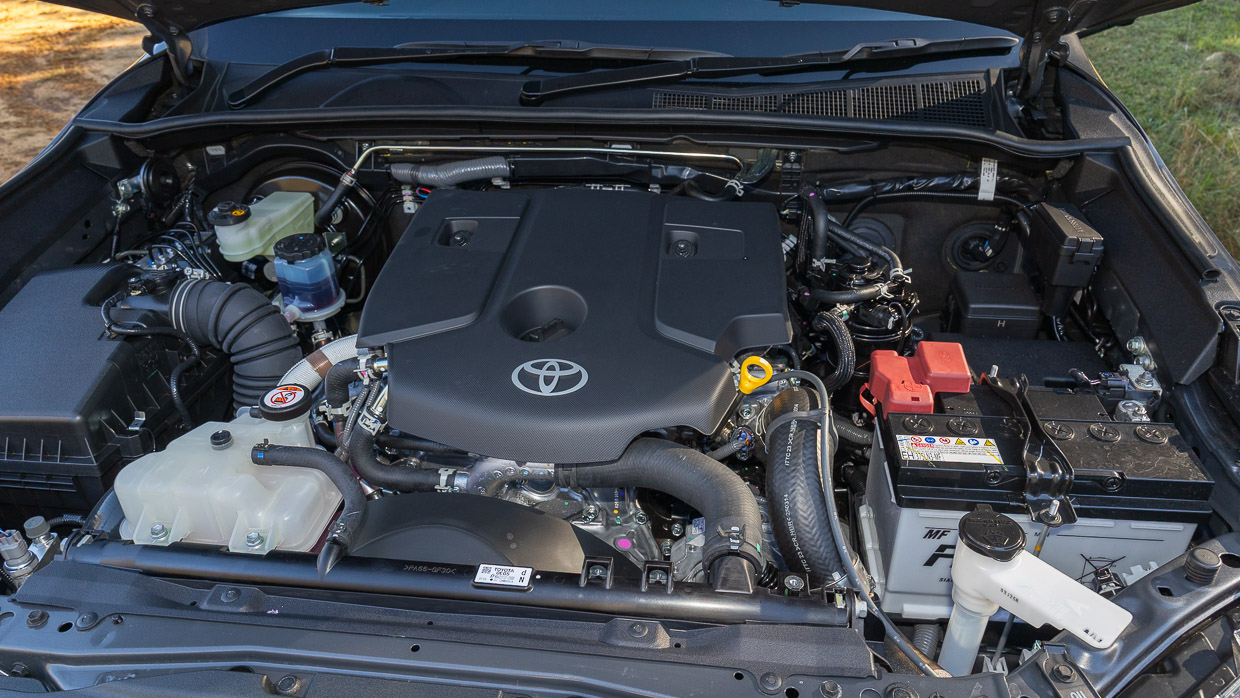
Service intervals for the Toyota Hilux are every six-months or 10,000km, whichever occurs first. Looking at my local dealerships website, I can see the first six services, or 60,000km of motoring, will set you back $250 per service under Toyota’s capped price servicing plan.
There’s also the beauty of having a Toyota dealership basically anywhere. There’s a location close to my house, and one close to my family property in rural NSW. So I’d feel reassured in that department.
There are some clever features Toyota engineers have included that just make the old ’Lux an easy car to work on.
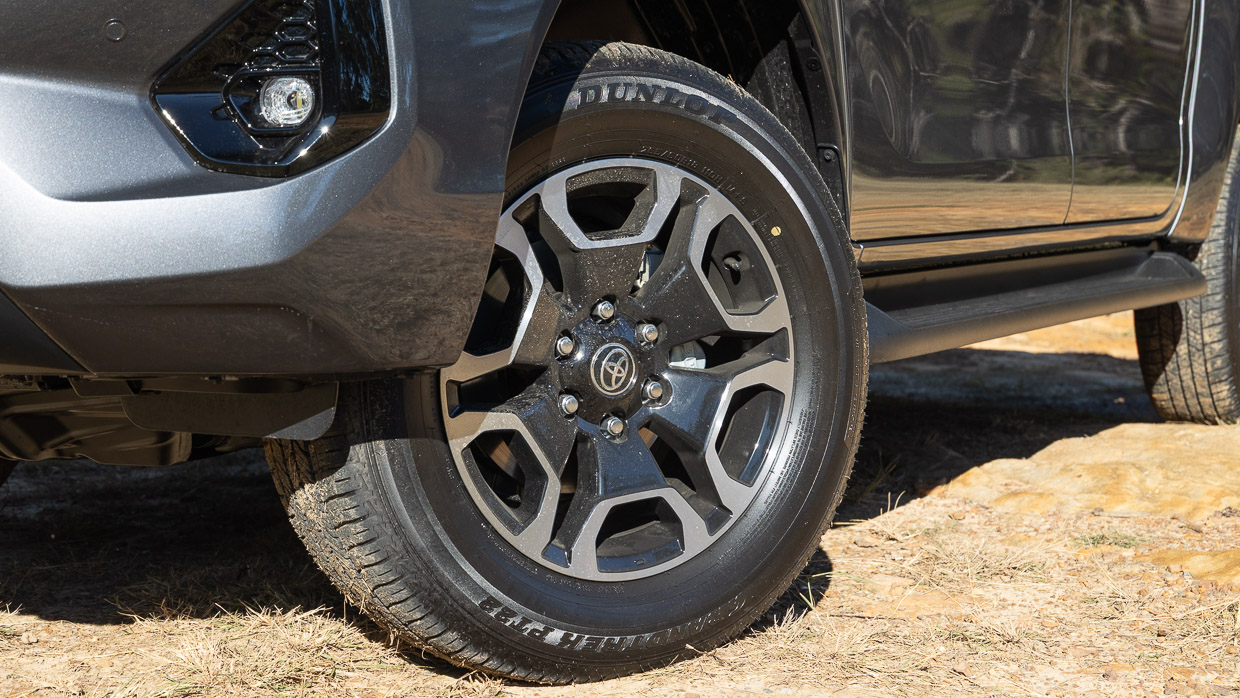
Take the front suspension, for example. There are two bolts on the lower control arm, if you undo them, you’ll be able to replace the front strut or remove a CV joint from the vehicle without touching the upper control arm.
For anyone that has had to replace a CV joint in the field, you’ll appreciate this approach to vehicle design.
Despite significant shortcomings like high pricing, basic interior, and lack of inclusions, the 2025 Toyota Hilux should still be high on the dual-cab ute shopping list.
Simplicity is an appealing attribute for low-key folk like myself who don’t need all the bells and whistles in a vehicle. Plus, every Aussie mechanic knows how to work on one.
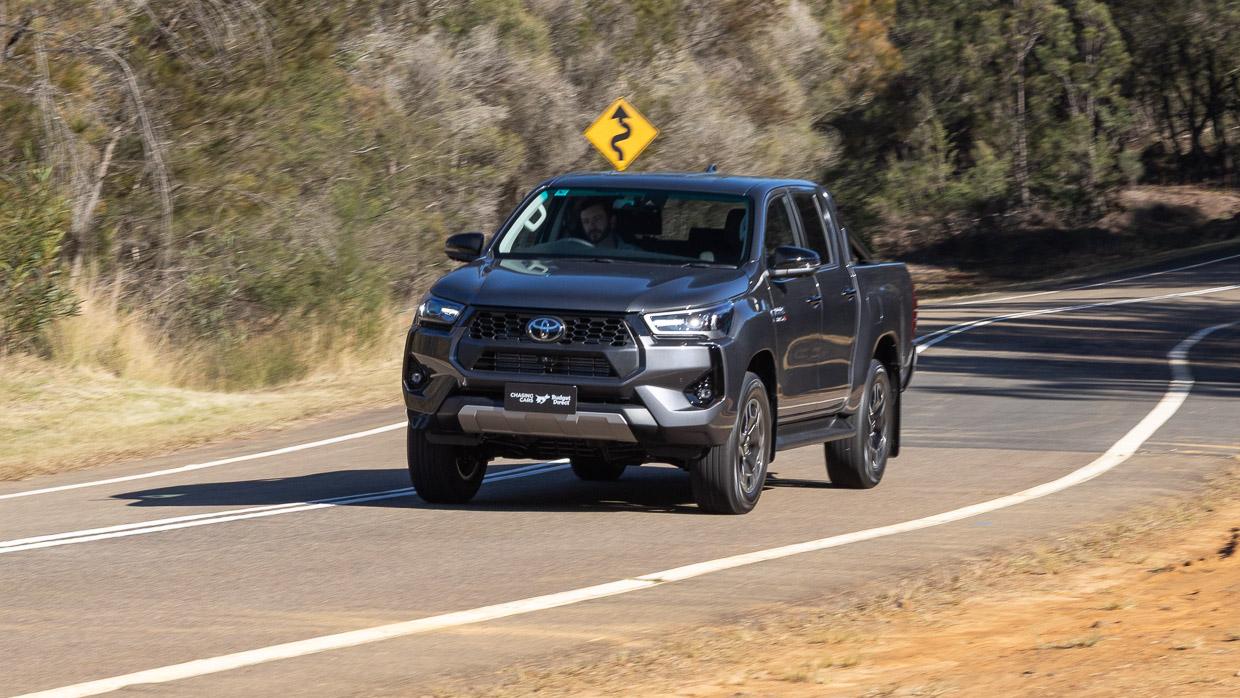
Off-road ability is still first class, and has really set the benchmark other manufacturers need to emulate, however it would be nice if the rear diff lock didn’t cancel traction control to the front axle.
If you’re shopping here, though, strong consideration should be put to the Isuzu D-Max and Mitsubishi Triton. Both are simple, practical work vehicles with more kit and better drive-away pricing.
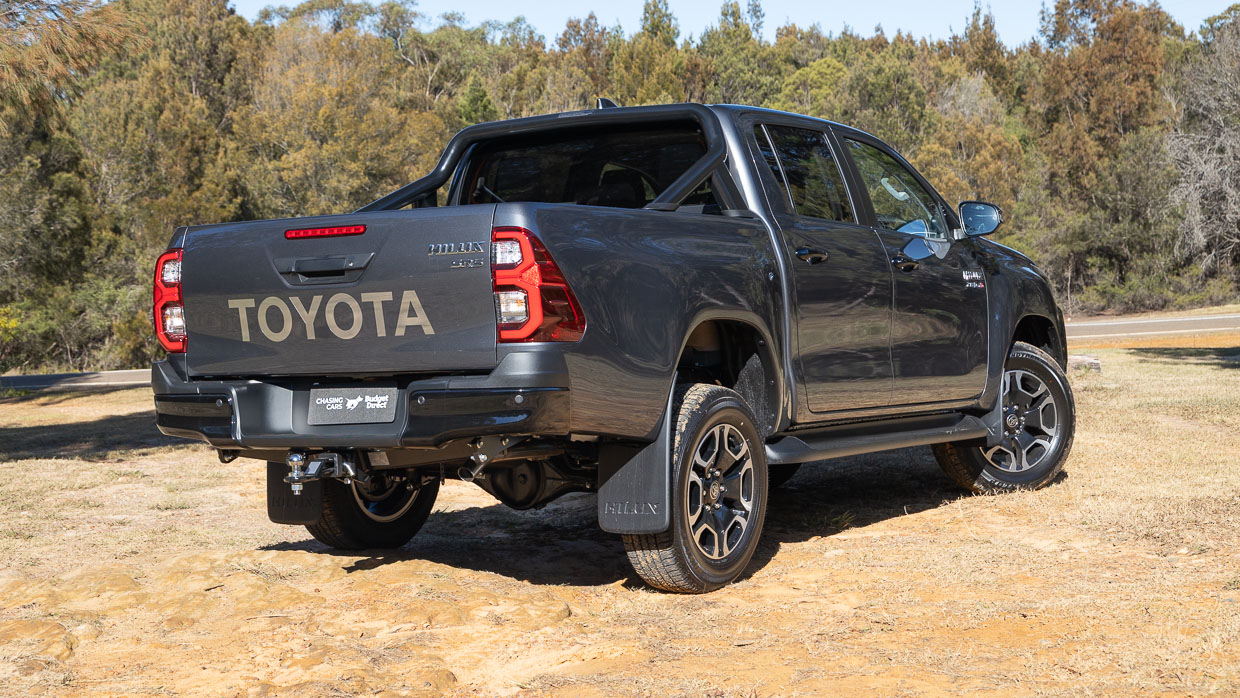
When it comes time to sell though, they won’t fetch close to what the Hilux will resale wise. For some, that fact alone is enough to keep on trucking in a Toyota Hilux.
Considering how fast this ute market is changing though, the next generation Hilux has genuinely big shoes to fill if it wants to remain the top dog in the Australian ute market. The times, they are a changing.
Key specs (as tested)
About Chasing cars
Chasing Cars reviews are 100% independent.
Because we are powered by Budget Direct Insurance, we don’t receive advertising or sales revenue from car manufacturers.
We’re truly independent – giving you Australia’s best car reviews.
The estimate provided does not take into account your personal circumstances but is intended to give a general indication of the cost of insurance, in order to obtain a complete quote, please visit www.budgetdirect.com.au. Estimate includes 15%^ online discount.
^Conditions Apply
Budget Direct Insurance arranged by Auto & General Services Pty Ltd ACN 003 617 909(AGS) AFSL 241 411, for and on behalf of the insurer, Auto & General Insurance Company Limited(ABN 42 111 586 353, AFSL 285 571).Because we don’t know your financial needs, we can’t advise you if this insurance will suit you. You should consider your needs and the Product Disclosure Statement before making a decision to buy insurance. Terms and conditions apply.
Indicative quote based on assumptions including postcode , 40 year old male with no offences, licence suspensions or claims in the last 5 years, a NCD Rating 1 and no younger drivers listed. White car, driven up to 10,000kms a year, unfinanced, with no modifications, factory options and/or non-standard accessories, private use only and garaged at night.
^Online Discounts Terms & Conditions
1. Discounts apply to the premium paid for a new Budget Direct Gold Comprehensive Car Insurance, Third Party Property Only or Third Party Property, Fire & Theft Insurance policy initiated online on or after 29 March 2017. Discounts do not apply to optional Roadside Assistance.
2. Discounts do not apply to any renewal offer of insurance.
3. Discounts only apply to the insurance portion of the premium. Discounts are applied before government charges, taxes, levies and fees, including instalment processing fees (as applicable). The full extent of discounts may therefore be impacted.
4. We reserve the right to change the offer without notice.